National parks
© Copyright 2023 by wildlifetrip.in
The Pench National Park is well-famous as the Mowgli’s Jungle as the legendary writer Rudyard Kipling written his very popular children book ‘Jungle Book’ at this place keeping the Pench forest in mind.

Spread over a large area of 758 sq km with the 299 sq km of the core area and remaining as the buffer area, the Pench National Park is located in the heart of India in the districts of Seoni and Chhindwaraof Madhya Pradesh. The park is beautifully nestled amidst the southern hills of the Satpura range and the forest is divided equally into the east and west region by the river Pench which flows through the middle of the forest from north to south direction. The place where this famous forest is situated holds the significant place in Central India’s history and is a treasure of Nature. The forest has derived its name from the river flowing through it and known for nourishing the rich and varied flora and fauna. The forest and its locality have been mentioned in the many pieces of Indian Literature written since the 17th century.
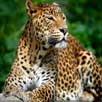
The Pench National Park is well-famous as the Mowgli’s Jungle as the legendary writer Rudyard Kipling written his very popular children book ‘Jungle Book’ at this place keeping the Pench forest in mind. The name of the forest is mentioned in the book ‘Ain-I-Akbari’ as well. The wildlife park of Pench is one of the most visited wildlife destinations in India and known for its mesmerizing landscape and the thrilling Jeep Safari for the wildlife sighting. The forest of Pench had been declared as a wildlife sanctuary in the year 1965 and given the status of a National Park of India in the year 1975. Later, the park has been taken under the tiger project in the year 1992 and declared as the tiger reserve park. Due to the efficient tourism management in the Pench National Park, the park has been presented with the "Best Management Award".
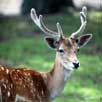
The beautiful forest of Pench is known for its varied wildlife species that attracts the wildlife tourists with their majestic presence in the forest. Being a popular tiger reserve park, the Pench National Park has also helped in the conservation of the endangered Royal Bengal Tigers. At present, the forest of Pench is the natural habitat for around 44 Tigers along with the other wild animals such as Leopard, Gaur (Indian Bison), Nilgai, Wild Boar, Wild Dog, Sloth Bear, Jackal, Fox, Hyena, Jungle cat, Wolves and various species of Deer like Cheetal, Sambar, Spotted Deer, Barking Deer, Chousingha, Chinkara,monkeys, etc. Other small animals include the Palm Civet, Small Indian Civet, Porcupine etc. In short, the forest of Pench is the home to around 33 mammal species, 164 Bird species, 30 species of reptiles, 50 Fish species and 10 amphibian species along with the numerous species of insects.
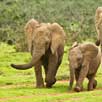
The landscape of Pench forest receives high rain precipitation due to which the forest gets the dense cover of Sal (Shorea robusta) which is the common tree of the wet deciduous Jungles of the north and central Indian landscape. Along with Sal, the other vegetation of the park includes the Teak, Crocodile bark, saja, haldu, bijiayasal, lendia, dhaora, amaltas, salai, aonla, etc. The ground region has the extensive stretches of grasses, bushes, plants, bushes and the plantlets. The patches of the large Bamboo trees can also be observed at the numerous places in the forest. Also, the Mahua tree found in the forest holds a significant value for the wildlife as well as the tribal people living in and around the forest. The Mahuaflowers are the major food for the mammals and the birds as well as for brewing the local liquor by the tribal people. The tree which is known as 'Arjun' is commonly found near the water bodies. The evergreen trees like Mango tree and Jamun tree can also be found in the forest.
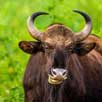
The Sundarbans National Park can only be accessed by the connecting river channels using the small to large boats and small ships. As there is only the water medium to traverse through the park so there is only Boat Safari allowed in the park and Jeep Safari and Elephant Safari are not allowed to visit the park. While on the boat safari, no one allowed to get down to the river bank and walk in the park. You will only be allowed to get down at the designated Deltas with villages and hotels which are located on the fringe of the National Park. You get the Safari permits for a day to a maximum of seven days and choose to hire a complete boat to get the seats in a big ship according to your budget and holiday plan.

The captivating beauty of the landscape of Kanha forest which includes the valley that shaped like a horseshoe, the barren land, grassland, dense Sal and bamboo forest and the Halon valley attract the Nature lovers to offer the picturesque scenery along with the soothing tranquillity and the serene sounds of different animals and melodious chirping of birds. The whole ambiance has a mesmerizing effect on the visitors which is a heart-warming and memorable experience cherished for life. The best location of the park is the sunset point known as BamniDadar which one must visit the park to get the panoramic view of the forest and the overwhelming beauty of the Sunset.
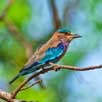
The Pench National Park has a tropical dry climate with having monsoon, winter and summer as the three main seasons. The best time to visit the Pench National Park is the winter season from the mid-October to mid-April. The park remains open for the tourist from the 16th October to the 30th June every year and remains closed from 1st of July to 15th of October in the monsoon season. The weather remains pleasant from October to April with the moderate temperature between 14 degrees Celsius to 32 degrees Celsius approximately except a few days in the acute winter when the temperature dips around 4 degrees Celsius. The summer season, from April to June, the temperature gradually increases and reaches up to around 42 degrees Celsius in May and June during the daytime.
However, the summer season is considered best for the wildlife sighting as the wild animals visit frequently to any water source to quench their thirst making it easier for you to get the sighting, whereas, in winter season, you will get the best scenic view of the forest as the forest is in full bloom with the eye-catching greenery. If you are comfortable with the high-temperature, then you can visit in May and June as well, but with a few of the precautions to avoid any trouble caused by the summer heat. While visiting in summer carry thin cotton clothes along with the Hat, Sunglasses, and Sunscreen to combat the sun’s heat, whereas in winter carry enough warm clothes with you.